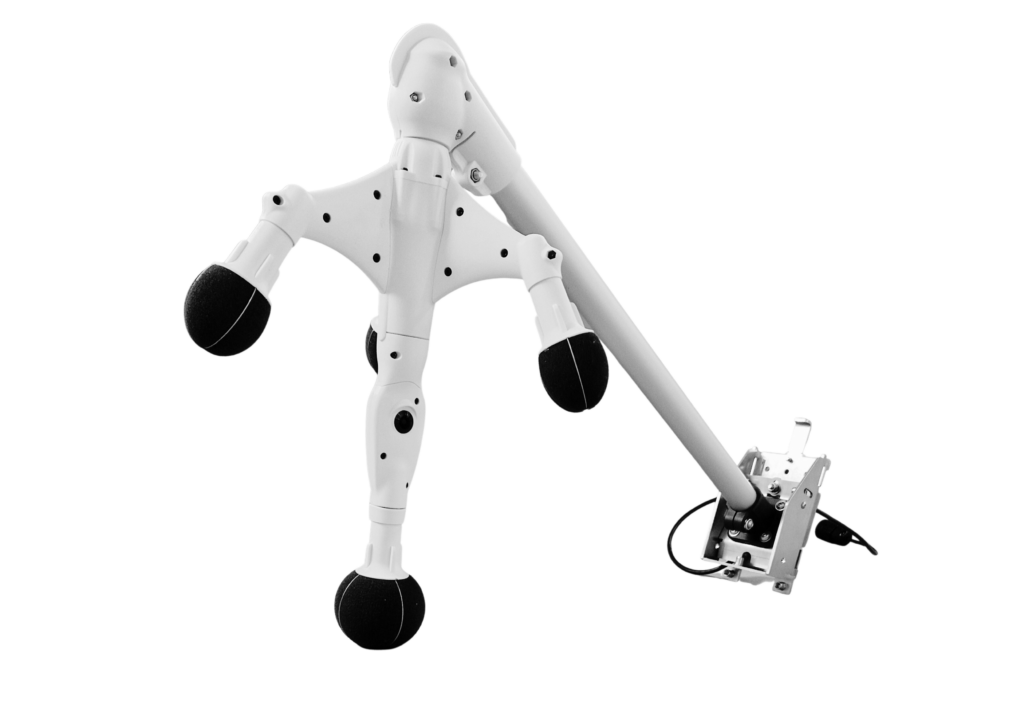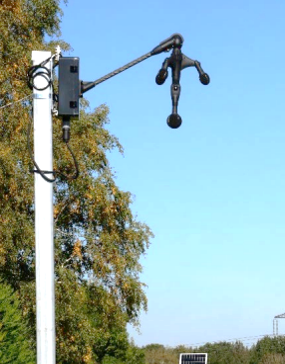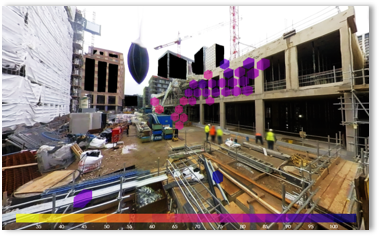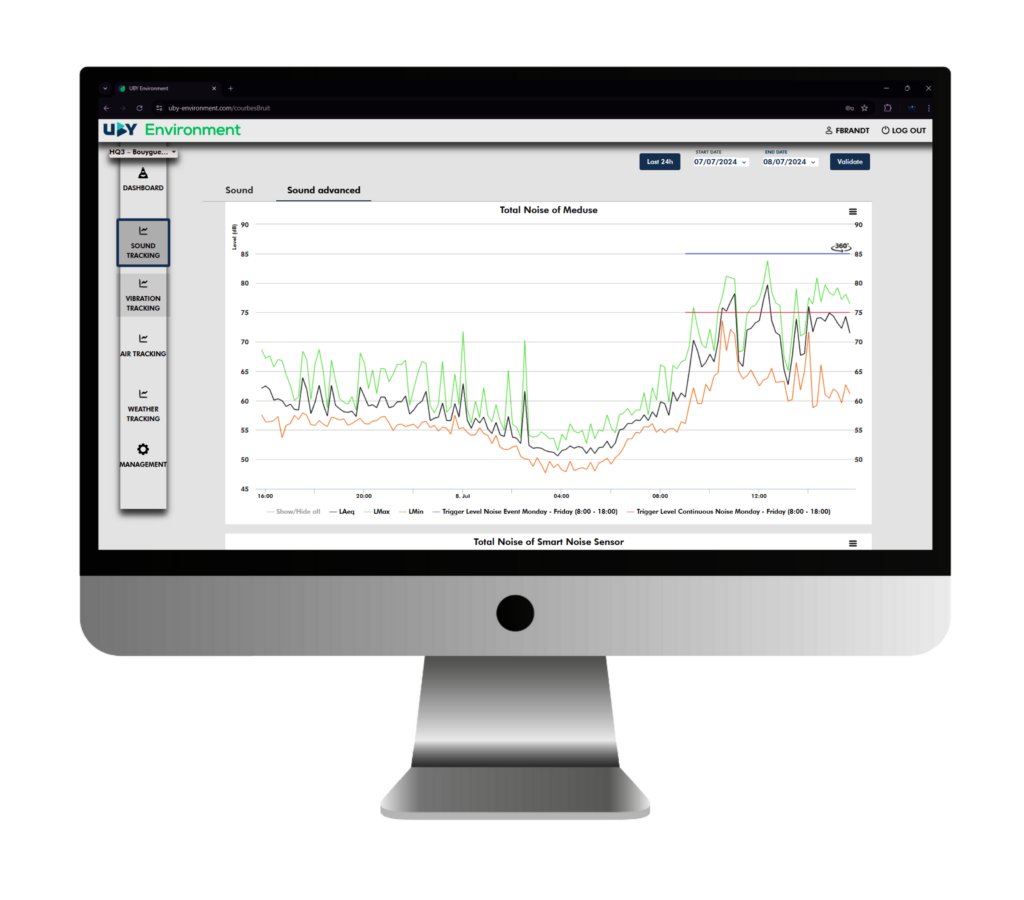Noise visualisation “Meduse” sensor
The Méduse sensor works like an acoustic camera. It provides continuous visual identification of sources and levels of surrounding noise.
Its visual identification system takes 360° photographs every 15 minutes, with an accuracy of locating the dominant acoustic source to within 1° of error in 70% of cases.

The méduse in action
Technical features
Sound meter: Class 1 (1 dB accuracy) or class 2
Data type: Decibels (dB), LAeq, LA10 and LA90 graphs
Data visualisation : real-time graph, photograph with location of source and intensity of noise.
Network: 2G/3G/4G
Power: mains 220V or 110V (can be mounted on urban lighting pole). May be installed with solar panel when no mains power is available.
Battery life: an optional battery provides for 24hr noise surveillance
Power consumption: 5W
Weight: 5-10 kg (sensor + datalogger + comms interface)
Dimensions (mm): 450 x 160 x 700
Method and condition(s) of setup: Minimum 4m height with direct line-of-sight to the area surveilled
Ties: Zip ties / clamping collars / screws
The Méduse case has a universal mounting plate that makes it easy to install in a variety of situations: street lighting columns, balcony railings, angle brackets, etc.
techniques prerequisites and maintenance
Required equipment: 2G/3G/4G network coverage; a mains power socket (possible on lighting pole); higher secure point (ideally with 360° vision on the surveilled project)
Maintenance: Remote supervision by UBY support. Microphone change every year.

Platform visuals

Blurred faces, sensitive areas, detected noises and their origin and intensity

Graphs of the various noise curves (LAeq, LA10 et LA90)
FAQ
How must the sensor be mounted?
Microphones must be pointing downward.
Does the sensor comply with data protection legislation?
The sensor, its software and recognition algorithm comply with the European GDPR regulation.
Are specific authorisations necessary to set up the sensor?
Authorisations must be granted in order to mount the sensor on public property or historical monuments. UBY does not apply for these authorisations on behalf of the client.
No specific authorisations are necessary when being installed on private property.
